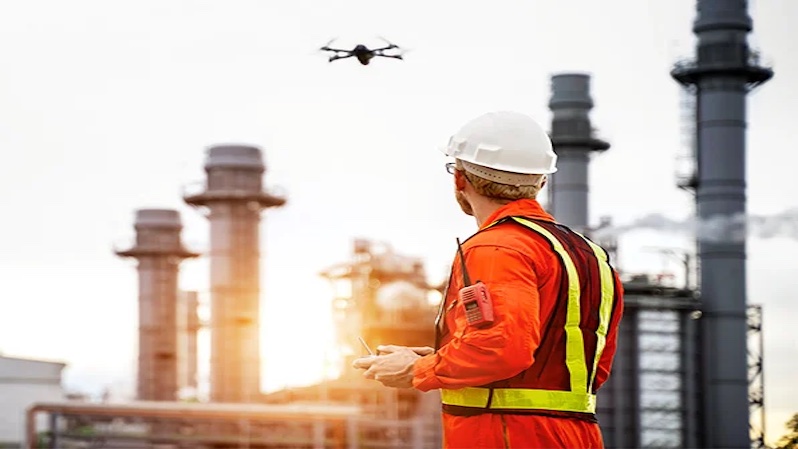Turn On, Tune In, Rock Out – Five Key Private 5G Deployments by Verizon Business

Verizon Business is probably the one operator-backed enterprise services provider – outside of China, at least – that is starting to look like it has the measure of the private 5G market. It speaks very well of its strategies and successes, of course, but also of how it has been forced to impose new organisational logic and cultural values on the vast and varied global enterprise market in order to make a proper fist of it. (It sounds pretty convincing; but you can judge for yourself here and here, and also more broadly here.) Anyway, as per the links, it has a bunch of unnamed references, but also a stable of public ones, and RCR Wireless has cherry-picked the best below – as evidence that, indeed, contrary to certain Industry 4.0 schools of thought, mobile operators are settling into this private 5G game, too.
1 | Cummins, US (discrete manufacturing) – critical-grade and general-purpose The one that says Verizon Business can do both critical-grade and general-purpose at the same time. This twin deployment for US engine manufacturer Cummins covers a two-million square-foot factory in New York state, and includes both an all-edge private 5G network for hard-nosed Industry 4.0 connectivity and a neutral host system for everyday broadband connectivity. It is the first neutral host network that Verizon Business has put in place in the US; both systems leverage local tranches of its own C-band spectrum (rather than shared CBRS spectrum), with around 160 MHz available for 5G and about 40 MHz for 4G/LTE traffic. Ericsson is supplying the radio and core networks, which will see about 125 hardware radio “resources”, including six outdoor radios, bring coverage to the entire site. Verizon has cited various use cases for the private 5G network, including industrial vehicles and robots (AGVs, AMRs, MIRs) for handling and transporting materials, plus AR/VR for remote worker assistance and collaboration, production-line
machine vision for defect detection, sundry sensors for machine health monitoring, and other proprietary applications for “secure onsite operations”.
The neutral host system is for laptops, phones, and suchlike – and has been commissioned because public 5G coverage is lacking at the site. Read more.
2 | Audi, Germany (automotive testing) – complex, collaborative and bespoke The one that suggests Verizon Business can go deep on complex Industry 4.0 consultancy and integration. This “highly-customised” private 5G “environment” at a vehicle test track belonging to Audi in Germany uses multiple cores, radio frequencies, and network technologies to recreate the kinds of connectivity scenarios the automaker comes up against when distributing cars into global markets. It features “custom replicas” of Verizon’s public network in the US, plus of various unnamed local European telcos, as well as the roaming network of an unnamed MVNO partner in Asia Pacific. The project appears like a genuine standout on the current private 5G circuit. It leverages equipment and services variously from network vendor Nokia, edge/cloud vendor AWS, and system integrator Smart Mobile Labs. The theory is its geographic flexibility means Audi can “streamline” its multi-territory R&D test cycle by replicating regional connected-driving conditions – as the industry moves to “software-defined vehicles”. The track and network, located 300 kilometres west of Audi’s headquarters in Ingolstadt, are available to other brands from the Volkswagen Group. These include Škoda, SEAT, CUPRA, Lamborghini, Bentley, Porsche, and Ducati, as well as Volkswagen itself. The network uses the 3.7-3.8GHz private-5G band in Germany. Read more.
3 | Port of Virginia, US (port logistics) – formula-driven, and repeatable The one that says Verizon Business has the blueprint, and can repeat the trick. Here, the US carrier strung together three wins, effectively, in neighbouring Virginia port operations: at the Norfolk International Terminal (NIT), the next-door Virginia International Terminal (VIT), plus at another Port of Virginia property. But its real success was in the repetition, not just across adjacent interests, but across port operators, and also across global markets – its 2021 deal with Nokia to supply the Port of Southampton in the UK (see below), in the backyard of rival UK operators, sent shockwaves through the market, and presumably formed the template for its 2022/23 follow-ups in Virginia. Subscribe now to get the daily newsletter from RCR Wireless News SUBSCRIBE The NIT deployment (2023) covers 270 acres with localised tranches of its own (non-CBRS) spectrum, and is geared to replace a failing outdoor Wi-Fi architecture. The initial use case is coverage – for reliable broadband comms with ruggedised industrial devices, plus push-to-talk / video services. The VIT project (2022) covers 275 acres at a primary container terminal at the port, and is also positioned as a more-reliable replacement for Wi-Fi. VIT is billed as “one of the most technologically advanced terminal operators in the world”. Logic says it is a coverage exercise, too; but the scope is for IoT, AI/ML, AR/VR to support various port whizz-bangery. Ericsson is the supplier in both deals. Read more.
4 | Rocklahoma, US (entertainment venues) – turn on, tune in, rock out The one where the penny dropped – that private 5G is not just about hard-nosed Industry 4.0. (And the one that provided the title analogy and illustration for this article.) Verizon Business has a bunch of similar 4G/5G gigs in entertainment venues of various sorts in the US – with the National Hockey League and the Miami Grand Prix, for instance – but this one, at a three-day rock festival in Oklahoma (Rocklahoma) is a fun one, and also a temporary fixture, which must surely have informed its late-2023 drive into the US mid-market, which has seen it pick up multiple work with smaller factories, and flower farms, and other (unnamed) “mom-and-pop” firms. The Rocklahoma stint, on Labor Day last year, involved a drag-and-drop 5G system from Celona. The portable 5G system, running in CBRS spectrum, connected the 975,000 square-foot event space with dedicated connectivity for back-of-house apps for staff, sponsors, and vendors. It covered car parks and admission gates, as well as stage and backstage areas – so point-of-sale devices, ticket/barcode scanners, and laptops worked smoothly. It was a basic connectivity exercise – dropped in, switched on, and then taken away again. But the reception was good, in all ways – the signal, the scanner, the transaction, the satisfaction. Verizon has since harvested low-hanging 5G fruit in the same way, whilst also pursuing higher-hanging gains with the likes of Audi and Cummins (see above) Read more.
5 | Port of Southampton, UK (port logistics) – the gateway to the world The one that started it all, which now looks like something of a fluke – given how Verizon Business has since retooled its private-5G (‘acceleration’) team in order to work smarter. But this deal, with Associated British Ports (ABP) in the UK, is the key to it all – which showed spectrum liberalisation in international markets means the parochial business arm of a foreign operator (or operative or any sort) could set up in a network operator, effectively, in a new market, and beat local incumbents to the punch. Which is what Verizon Business did at the Port of Southampton in the UK back in 2020/21, as the likes of BT and Vodafone scratched their chins. Nokia was the vendor partner this time. Having secured an airtime licence from UK regulator Ofcom to build a private 4G/5G network in band n77 (3300–3800 MHz) at the “number one port for cars and cruise” in the UK, ABP chose US-headquartered Verizon Business to show it how. Verizon Business selected Nokia as part of a non-US 5G supply deal, to connect enterprises in Europe and Asia Pacific. The ABP deal was the first of its kind for Verizon Business, touring its bid to “take private 5G global”. Like the NIT/VIT setups (see above), the remit was to replace ineffective Wi-Fi connectivity in the first instance, just to get stuff working that should be working, and then to expand with other Industry 4.0 pyrotechnics.

